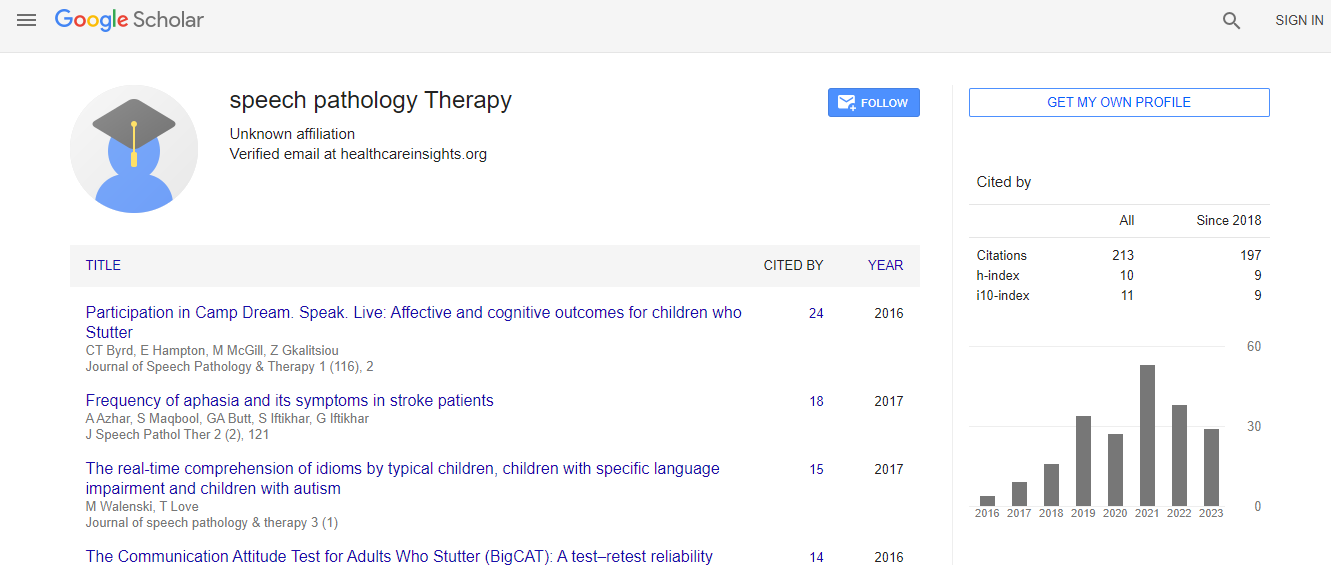Research Article
The Communication Attitude Test for Adults who Stutter (BigCAT): A Test-Retest Reliability Investigation among Adults who do and do not Stutter
Vanryckeghem M1* and Muir M21Department of Communication Sciences and Disorders, University of Central Florida, USA
2Department of Speech and Hearing, Melbourne Terrace Rehabilitation Center, Florida Ave, Melbourne, Australia
- *Corresponding Author:
- Martine Vanryckeghem
Department of Communication Sciences and Disorders
University of Central Florida
Scorpius Street, Orlando, USA
Tel: +1+407-823 4808
Fax: +1+407-823 4816
E-mail: martinev@ucf.edu
Received date: January 27, 2016; Accepted date: May 02, 2016; Published date: May 10, 2015
Citation: Vanryckeghem M, Muir M (2016) The Communication Attitude Test for Adults who Stutter (Big CAT): A Test-Retest Reliability Investigation among Adults who do and do not Stutter. J Speech Pathol Ther 1:110. doi: 10.4172/2472-5005.1000110
Copyright: © 2016 Vanryckeghem M et al. This is an open-access article distributed under the terms of the Creative Commons Attribution License, which permits unrestricted use, distribution, and reproduction in any medium, provided the original author and source are credited.
Abstract
Background: Stuttering within a multi-dimensional framework revolves around the recognition that affective, behavioral and cognitive variables play a role in the nature and persistence of the disorder. Aside from clinical observations, the value of self-report standardized measures to explore the ‘below the surface’ structures that go along with stuttering has been acknowledged by many workers in the field of fluency disorders. As it relates to the investigation of the cognitive correlate of stuttering, self-report tests exploring speech-associated attitude have been established. The Communication Attitude Test for Adults who Stutter (BigCAT) is one of the more recently developed standardized assessment tools that serves this purpose.
Aims: The aim of this investigation was to determine the BigCAT’s test-retest reliability.
Methods and Procedure: The BigCAT was administered to a group of 33 adults who stutter and 50 adults who do not stutter. All participants were given the test twice between 5 and 7 days apart.
Outcomes and Results: The test scores on the first and second administration of the BigCAT proved not to be statistically significantly different for both groups of participants. In addition, the correlations between the two BigCAT test scores were strong. As a side issue, it was observed that the scores of adults who do and do not stutter differed significantly on both occasions.
Conclusion and Implications: In addition to previous data that have pointed to the BigCAT’s usefulness in discriminating individuals who stutter from those who do not based on their speech-associated belief system, and the test’s internal reliability, the present study indicates that the BigCAT has good test-retest reliability.
 Spanish
Spanish  Chinese
Chinese  Russian
Russian  German
German  French
French  Japanese
Japanese  Portuguese
Portuguese  Hindi
Hindi 